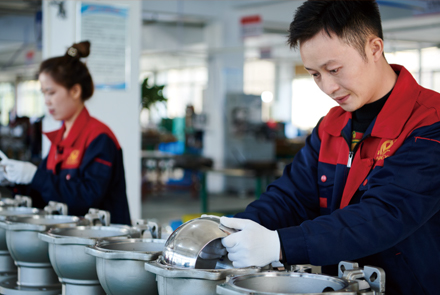

發(fā)布時(shí)間:2022-07-14瀏覽量:585
Internal leakage of Japanese standard flanged ball valve:
The internal leakage of the Japanese standard flanged ball valve is a relatively common fault, which is mainly caused by the following reasons:
First, during the installation and construction process, the process of transporting the ball valve causes the overall damage of the ball valve;
The second is that no drying treatment and anti-corrosion treatment are carried out after the hydraulic test, which causes the sealing surface to form rust;
The third is that the ball valve is not installed in the fully open position, and the spatter during welding will adhere to the valve ball, which will further damage the valve seat in subsequent use;
Fourth, in the process of use, the operator does not perform preventive maintenance on the valve, and if the inactive Japanese standard flanged ball valve is not maintained for a long time, the valve seat and the valve ball will be locked, causing damage during the switching process;
Fifth, the operating procedures are not followed during the use of the ball valve, and the opening and closing of the ball valve is not in place.
Leakage of Japanese standard flanged ball valve:
The external leakage of the Japanese standard flanged ball valve is mainly the leakage of the valve stem. Generally, no maintenance is required, but due to long-term use, the valve stem will be worn or aged, resulting in leakage. In daily production, when the valve stem leaks, the method of injecting sealing grease is usually used to temporarily stop the leakage, but too much injection will make it difficult to rotate the valve stem, and the injection should be stopped after the leakage is stopped.

上一篇:已經(jīng)尾篇